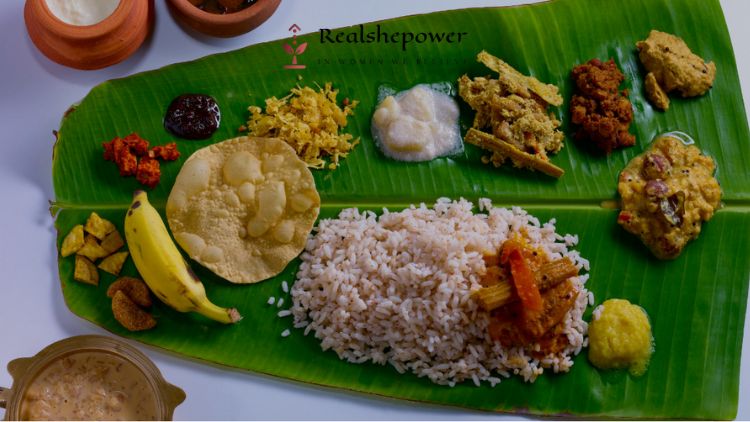From Baisakhi’s Bhangra to Bihu’s Bihuwaan: A Delicious Journey Through India’s Vibrant Harvest Festivals


Imagine a land basking in the warm glow of the spring sun, fields overflowing with golden grain, and the air buzzing with joyous celebrations. This, my friends, is the time for India’s harvest festivals – a vibrant tapestry woven with colors, music, dance, and of course, delicious food! Today, we’ll embark on a flavor-filled adventure, exploring the most popular harvest festivals, from the north’s electrifying Baisakhi to the northeast’s foot-stomping Bihu.
Bhangra Beats and Butter Chicken: The Exuberance of Baisakhi (Punjab)

Our journey begins in the heart of Punjab, where the vibrant Baisakhi festival explodes with color and energy. Marking the Punjabi New Year and the Sikh harvest festival, Baisakhi falls on April 13th every year. Imagine vast fields of swaying wheat, farmers brimming with pride, and the infectious rhythm of Bhangra filling the air. Men and women, young and old, twirl and leap in a dazzling display of traditional folk dance.
But Baisakhi isn’t just about energetic dance moves. It’s a time for families and communities to come together. The aroma of freshly prepared delicacies fills the air – think creamy Makhan Malai (butter cream) poured over steaming Jalebis (deep-fried, syrup-soaked spirals), and of course, the iconic Butter Chicken, a dish believed to have originated in Punjab during this festive season. Don’t forget the refreshing Lassi, a yogurt-based drink that perfectly complements the rich flavors.
Fun Fact: Did you know that Baisakhi also celebrates the formation of the Khalsa, the Sikh martial order, by Guru Gobind Singh in 1699?
Pongal’s Padi and Prayers: A South Indian Soiree (Tamil Nadu)

As we travel south, the landscape changes, but the spirit of harvest remains. In Tamil Nadu, Pongal, a four-day-long festival, is a joyous celebration of the sun god Surya and the bountiful rice harvest. The festivities begin with Bhogi, where people discard old belongings and welcome new beginnings. The second day, Surya Pongal, is dedicated to worshipping the sun with offerings of freshly harvested rice cooked in a special pot.
Trivia Time: The word “Pongal” translates to “to boil over,” symbolizing abundance and prosperity.
The festivities continue with Maatu Pongal, a day dedicated to cows, considered sacred animals in India. Cows are adorned with colorful beads and bells, and special rice preparations are offered to them. The final day, Kaanum Pongal, is a time for family gatherings and exchanging gifts. While sweet Pongal, a dish made with rice, lentils, jaggery (unrefined cane sugar), and ghee (clarified butter), is a star attraction, don’t miss the savory Ven Pongal, a comforting concoction of rice, lentils, and spices.
Onam’s Onasadhya and Athapookalam: A Keralan Kaleidoscope (Kerala)

Moving further south, we reach the lush green state of Kerala, where Onam, a ten-day harvest festival, paints the land with vibrant colors. This festival, believed to commemorate the return of King Mahabali, a mythical emperor, is a celebration of prosperity and homecoming.
Must-See: The breathtaking Athapookalam competition, where houses are adorned with intricate floral patterns using colorful flowers and rice powder.
The highlight of Onam is undoubtedly the Onasadhya, a nine-course vegetarian feast served on a banana leaf. Imagine an explosion of flavors – from the tangy Inji Curry (ginger curry) to the creamy Aviyal (vegetable medley), the crunchy Pappadam (papad) to the melt-in-your-mouth desserts like Ada Pradhaman (sweet rice pudding). Sharing this elaborate feast with loved ones is the heart and soul of Onam.
Bihu’s Bihuwaan and Bhog: A Foot-Stomping Assamese Affair (Assam)
As we journey east, the vibrant Bihu festival welcomes us to Assam. Celebrated thrice a year – Bohag Bihu in spring (harvest), Maghar Bihu in autumn (sowing), and Kati Bihu in winter (harvest) – Bihu pulsates with the rhythm of life.
Get Ready to Groove: Be prepared to tap your feet to the infectious Bihuwaan, a folk dance characterized by energetic steps and colorful attire. Men and women, young and old, come together in open fields to celebrate the harvest and the promise of a new season.

A key element of Bihu is the Bhog, a traditional feast offered to ancestors and deities featuring an array of regional delicacies. Think of the aromatic Maas Tenga (fish curry), the comforting Aloo pitika (mashed potato dish), and the melt-in-your-mouth Komal Saul (banana flower dish). Don’t forget the Pitha, a sweet rice cake staple, offered in various flavors like Til Pitha (sesame) and Chunga Pitha (cottage cheese).
Beyond the Food: A Glimpse into Traditions
As you travel across India during these harvest festivals, be prepared to witness a kaleidoscope of traditions. In Maharashtra, during Makar Sankranti, witness the mesmerizing sight of colorful kites dancing in the sky. In Odisha, Nuakhai celebrates the new rice with offerings and joyous processions. In Gujarat, Uttarayan marks the sun’s northward journey with rooftop bonfires and sweets like Undhiyu (mixed vegetable dish).
The Unifying Thread: Celebrating Life and Gratitude
Despite the regional variations, one thing binds these harvest festivals – a deep respect for nature’s bounty and the spirit of gratitude. These celebrations are a time to thank the earth for its harvest, to rejoice with loved ones, and to welcome a new season filled with hope and prosperity.
So, the next time you hear about India’s harvest festivals, don’t just imagine food (although, let’s be honest, the food is pretty amazing)! Imagine a vibrant tapestry woven with traditions, music, dance, and a spirit of community that celebrates life in all its richness.
